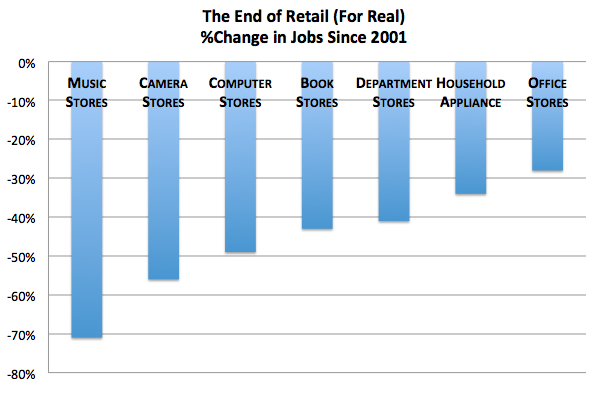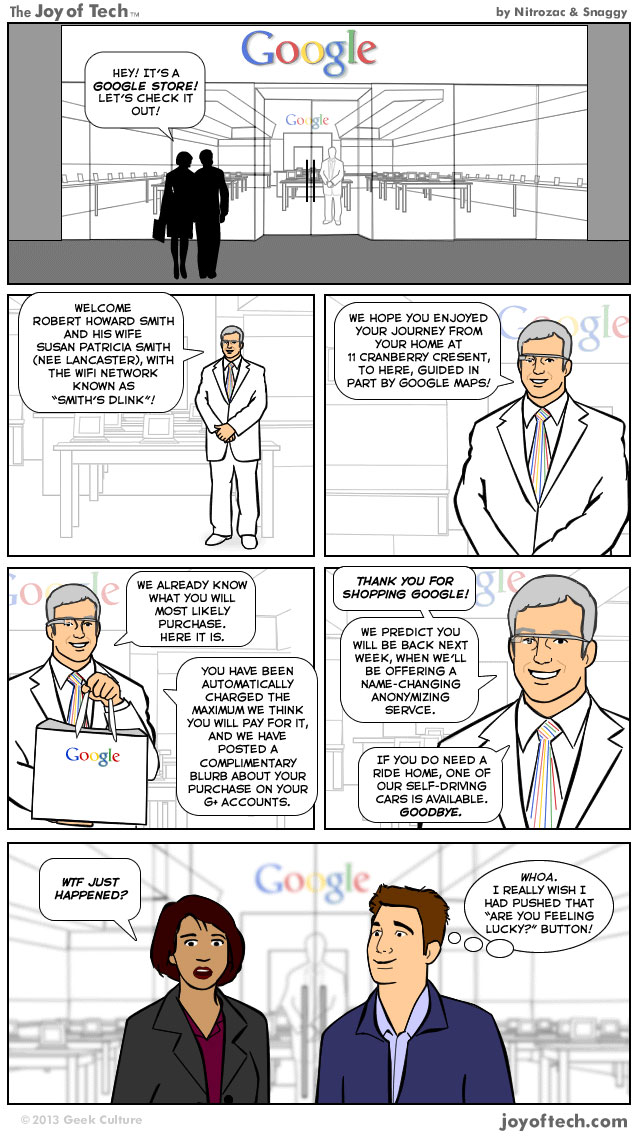Archive for februarie, 2013
Publicitatea pe Avocatnet.ro va fi vanduta de Mediafax Group
joi, februarie 28th, 2013Incepand cu 1 martie, adica de maine, Mediafax Group va reprezenta site-ul Avocatnet.ro pe vanzarea de publicitate. Ceea ce inseamna ca pe sectiunea business (sau Economic & Financiar cum apare in SATI), Mediafax Group va avea, cu cele 4 siteuri pe care le reprezinta, ZF, Avocatnet, BusinessMagazin si CursValutar.ro, 26% din piata actuala la nivel de unici duplicati, 28% la nivel de vizite si 36% la nivel de afisari!, totul conform cifrelor din luna ianuarie. Asta din punct de vedere statistic, in realitate avem numarul 1 si 2 din categorie, iar in curand, o data cu cresterea bmag.ro, vom avea numarul 1, 2 si 3.
70 de secunde vs 25 de minute
marți, februarie 26th, 2013Sau cum devenim de la o zi la alta mai superficiali. Sau mai selectivi. Alegeti voi.
In 2008 Jeff Zucker, CEO of NBC at the time, made famous a line about “broadcast dollars” becoming “digital pennies,” a quip that captures the phenomenon by which advertisers pay a fraction of traditional-media CPMs for the website version of the same content. A few years later Google chief economist Hal Varian wrote a post that touched on similar issues and their relationship to the newspaper business. In 2010, when he wrote it, he observed that while the Internet has been a boon to news consumption — more people read news, and more of us do so everyday — there’s one aspect of our news-reading that’s gone very much in the wrong direction: The amount of attention we pay to news when we read it online. We spend only 70 seconds per day reading news online; back when we got our news in a paper format, it was 25 minutes per day.
If we’re only fractionally engaged with online content, then, it’s logical that advertisers value online ads at pennies on the dollar.
Part of the explanation for our digital distractedness is the wealth — overabundance?! — of content choices online. But the more significant explanation, I think, is that digital content is inevitably archived and easily searchable. We graze and skim through content now because we know we can go back later, when we will have more time to actually pay attention. Tag it #longreads, push it to Instapaper, or leave open another tab in your browser. Then you can go back later and give it a really thorough read.
Intreg contextul, unul surprinzator, aici
The Death of Retail
luni, februarie 25th, 2013Scaderea joburilor din retail, pe departamente, in ultimii 12 ani. Sursa
Inca se pariaza pe viitor
vineri, februarie 22nd, 2013Ceea ce e bine. Probabil peste doi ani alt proiect va fi in locul Pinterest care va ocupa locul de acum al celor de la Zynga.
#Pinterest (with I think no revenues yet) is now worth more than #Zynga (with $1.28 BILLION in revenues)! Is that right? via Alex
— Bill Gross (@Bill_Gross) February 21, 2013
Gala Mediafax 2013
joi, februarie 21st, 2013Gala valorilor. A stirilor bune. Premii, foto, video, text, detalii. Si multumiri.
Google @ 800 USD
miercuri, februarie 20th, 2013Actiunile Google au depasit 800 USD ieri, pentru prima oara de la listarea din august 2004, ducand capitalizarea firmei la 266 miliarde USD (Apple e la 431 miliarde USD, Microsoft la 235 miliarde USD). In 6 ani si jumatate pretul actiunilor a crescut de 8 ori, de la +$100 la listare la +$800 ieri.
Ce mai poti face pe Facebook
marți, februarie 19th, 2013Pentru $250/luna poti inchiria o prietena falsa:
But no, it’s the copy that the site Fake Internet Girlfriend uses to pitch their service – in response to a rhetorical „Why rent an online girlfriend?” Said service involves a quasi-fraudulent Facebook account that will declare itself „In a relationship” with you. It will also post syrupy missives on your wall, and send you messages at times apropos of your proclivities. All for a minimum three-month $750 commitment.
Intimate as that sounds, the relationship is never anything but online. The operator of said Facebook account is indeed a real woman (supposedly) who knows real things about her patron, but nary the twain shall meet.
The company says that some people hire fake girlfriends for purposes of invoking jealousy in exes; others for reasons related to their jobs. Most troubling, they also suggest using the service to deflect suspicion of homosexuality.
O poveste cu masini, pr, jurnalism si semne de intrebare
luni, februarie 18th, 2013O poveste despre disputa dintre Tesla, producatorul de masini electrice, si New York Times:
1. Tesla vs. The New York Times: Everyone’s A Media Company Now
Even a few years ago, something like this probably would have required finding a rival newspaper — the Wall Street Journal, perhaps — to collaborate on a takedown. Or maybe an expensive full-page ad campaign in the top five papers, which would have looked defensive and seemed less convincing.
But now that every smart company has a regularly updated blog, Elon Musk has 136,000 Twitter followers, etc., brands can speak for themselves very powerfully. And if the tone is right, they don’t even look lame: Tesla actually looks pretty great right now*. The balance of power has shifted.
2.
Corporate PRs everywhere are reading @elonmusk ‘s NYT take down and thinking ‘hmm’
— emily bell (@emilybell) February 14, 2013
3. Tesla, the New York Times and the levelling of the media playing field
In a very real sense, everyone is a media entity of some kind now. That doesn’t mean someone with a few hundred followers on Twitter is the equivalent of the New York Times, but it does mean that a large corporation like Tesla Motors is on a much more level playing field with the newspaper than it would ever have been before. In the past, if Tesla didn’t like a review, it could a) call and complain, b) put out a press release and try to get a competitor interested in a story c) launch an expensive lawsuit (which Musk has also done in the past).
And what about society, or journalism in general — is it better off when this happens? There are two ways of looking at that question too: if you want to make it easier to figure out who is right and who is wrong, the current state of affairs isn’t going to help. The only thing that becomes obvious from the back-and-forth between Tesla and the New York Times is that it’s very difficult, and perhaps even impossible, to tell who is right on specific points. Some political topics are also arguably getting harder to understand rather than easier.
4. Tesla Owners Hit the Road to Prove Long-Distance Can Be Done
A group of Tesla Model S owners, charged up over a recent New York Times column that challenged the reliability of the electric vehicle, hit the road this weekend to replicate the same drive the Times reporter made.




